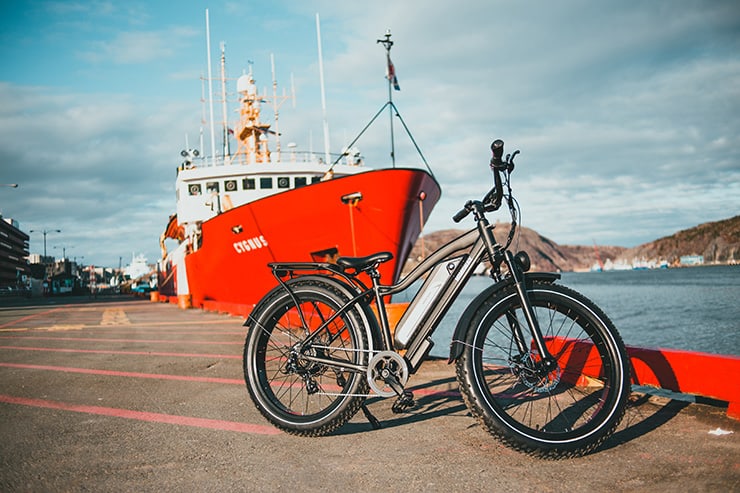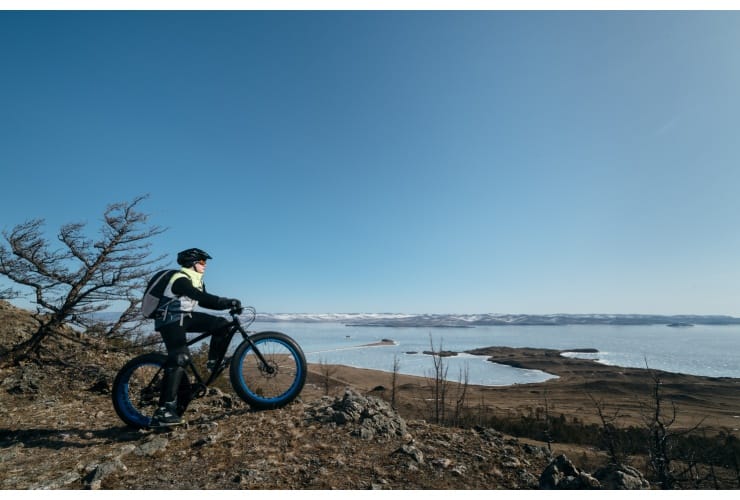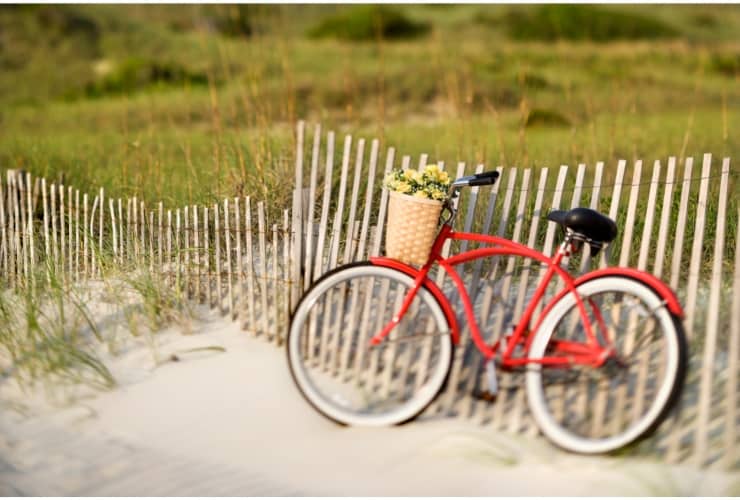Beach cruisers are the perfect option for a laid-back, leisurely ride around town or the park. They offer comfort, even over long distances, and an all-around fun cycling experience.
Beach cruiser tires can perform well on different terrains but they’re better suited for flat surfaces, so it’s nice to know that you can make your cruiser bike a little more versatile by changing the tires, such as switching them out with fat tires for a slower, smoother ride.
So if you’re wondering ‘can I put fat tires on my beach cruiser’ – the short answer is yes. But you also need to consider some other things, such as how they affect your cycling experience, or whether it’s even a good idea to put fat tires on a beach cruiser. These are some of the questions I’ve seen being asked a lot on different forums.
Here, I’ll discuss fat tires and beach cruisers in detail and answer any questions you may have.
Key Takeaways
- Beach cruisers are comfortable bikes that are ideal for leisurely rides on flat surfaces, but they can be made more versatile by changing the tires to fat tires.
- Fat tires benefits include being able to cycle on mud, snow, sand, and other rough roads, absorbing impact better than regular tires, and providing more stability and balance for beginners or heavier cyclists.
- Fat tires also have some drawbacks, such as being slower, requiring more effort to pedal, needing more maintenance and adjustment of tire pressure, and being bulkier and heavier.
- To put fat tires on a beach cruiser, check the tire size, rim width, and fork clearance of the bike, and make sure that the new tires are compatible with them. If not, you may have to change the rims and fork as well.
- Fat tires can make a difference in the riding experience of a beach cruiser, depending on your preferences and needs.
What Are Fat Tires?
Fat tires, as you can guess from the name, are wider than regular tires–the tire width is typically 3.5 to 5 inches.
For comparison, beach cruisers have balloon tires which are usually about 2.125 inches wide. Some beach cruiser tires are narrower, others wider. Mountain bike tires are narrower than fat tires, generally 2 inches or less – while road bike tires are much skinnier, from about 0.9 inches.
Fat bike tires are commonly found on fat bikes and other all-terrain bikes, which makes sense, as they provide needed stability for rolling over rough, uneven, or soft surfaces (such as on the beach).

Putting Fat Tires on Your Beach Cruiser
Before you go out and get fat tires to put on your beach cruiser, there are a few things you need to understand. You can’t simply install any old fat tires you find and expect them to fit your beach cruiser, it doesn’t work this way (unfortunately).
First, you need to know your cruiser bike’s tire size – that is, the diameter and the tire width. The tire size is usually written somewhere on your bike tires, for example, 26 x 2.125. In this example, 26 is the diameter and 2.125 is the width (both are measured in inches).
The width is the most important measurement, and what you’ll be looking to change; going from your current tire width to a fat tire that’s 3 inches or more.
When picking your new tires, you should make sure that they are compatible with your bike’s rim width and frame; the fork has to accommodate the width of your new fat tires.
If your current rims and fork cannot accommodate the fat tires that you want, you’ll have to change them too. As you can imagine, this means more work and more money. You might even have to get a professional to do it right.
Benefits of Having Fat Beach Cruiser Tires
Why would someone opt for a fat tire instead of a narrower one on a beach cruiser? It turns out there are a number of reasons and some clear benefits to switching out your beach cruisers tires. Let’s take a look at some of them
Fat Tires Offer Greater Versatility
Fat tires are more versatile and they perform better on different terrains compared to narrower tires. You can cycle in mud, snow, sand, and other rough roads, thanks to their added traction.
Oversized tires distribute your weight over a larger surface area. They are less likely to sink on soft terrain, like snow, compared to the narrower tires on, say road bikes.
Fat tires on your beach cruiser can, thus, offer access to trails that you may not have been able to ride with narrow tires.
Fat Tires Give a More Comfortable Ride

In addition to having a larger surface area, you can use a fat bike tire at a lower pressure. This means extra comfort.
When cycling in a bumpy area, these wide tires absorb impact better than regular mountain bike or beach cruiser tires.
You’ll be able to enjoy a smoother and more comfortable ride, regardless of how rough the road is.
The bouncier, comfortable ride is easier on your back too. You won’t have to complain about back issues later.
Fat Tire Bikes are More Beginner-Friendly
Fat tire bikes are much more stable than bicycles with skinny tires. They have better balance which gives beginners more confidence when they go off-road biking.
Rough terrain can be intimidating, sometimes even for an experienced rider. Fat cruiser bike tires make it easier with their wider surface area and remarkable grip. They roll over obstacles with ease so you won’t have a hard time trying to dodge rocks or roots on the road.
Downsides of Fat Beach Cruiser Tires
So, I’ve explained how installing fat bike tires on your beach cruiser has its benefits. But, of course, there are downsides too. It’s important to consider the potential drawbacks of installing fat tires on a beach cruiser, before you go out and make any purchases.
Fatter Tires Mean Slower Rides
Fat tires are not built for speed. If you put them on your beach cruiser you’ll notice that your cycling speed will be slower. You’ll have to apply more effort if you want to go faster.
This is something you have to carefully consider before making the switch from your beach cruiser tires to fat tires. If you’re not willing to sacrifice speed it may not be the best decision to make.
More Manual Pressure Regulation
The ability of a fat tire to run well on different pressure levels is what makes it so versatile. But this can mean more work for you.
First, you have to change your tire pressure as you go from one terrain to another, for optimum performance. If you typically cycle on different surfaces, the process can get tiresome pretty quickly and you might regret making the switch.
Another thing, you need to monitor your tire pressure keenly. High psi will make your ride more uncomfortable as the tires won’t be absorbing impact well. Low psi, on the other hand, could cause damage to your rims.

It’s Harder to Cycle With Fat Tires
Because of their size, fat bike tires are bulkier than regular tires. The low pressure can also make pedaling harder. Some people may like the challenge but it can be too much work if you’re used to lighter and easier beach cruiser tires.
Frequently Asked Questions
Are Fat Tires Easier to Balance?
Yes, fat tires are easier to balance.
Fat bike tires are wider and you will find them more stable than traditional bike tires. They distribute your weight over a larger surface and this makes them more forgiving even on rough terrain.
You are less likely to lose your balance when you ride over an obstacle or if you’re a heavier cyclist.
Can I Put Wider Tires on My Cruiser Bike?
Yes, you can put wider tires on your cruiser bike. However, it depends on the width of your rim and fork.
Beach cruisers usually have balloon tires and they can accommodate wider tires. But you have to check and make sure that your particular cruiser bike can accommodate the fat tire you want.
Are Fat Tires Good for Sand?
Yes, fat tires are good for sand.
Cycling on sand can be quite the challenge and you may end up getting frustrated instead of having fun. Because fat bikes have a larger surface area, they move better over an uneven sand surface and give you better control of your bike.
Additionally, you can increase the surface area further by reducing the pressure for an easier ride. So if you’re looking to ride on sandy beaches then fat tires are the better option.
Do Fat Tires Make a Difference?
Yes, fat tires make a difference in the riding experience of your beach cruiser. They have a better grip and will perform better on different surfaces compared to regular bike tires. You’ll find your bike more stable and easier to balance too.
Wrapping Up
Beach cruisers typically have balloon tires and they will accommodate wider tires, so if you want to switch them up – go for it!
But before shopping for fat tires, you need to check the size of the tires you currently have on your beach cruiser, and see if your rims and fork can accommodate a wider tire. If not, you might have to change them too!
People opt for fat tires for different reasons, notably because they’re versatile, perform well on rough terrains like muddy trails and sandy beaches and they also make great winter tires because they work well on snow too.
However, there are downsides, too; the slower speed and increased effort it takes to pedal are definitely things to consider before making the switch.

